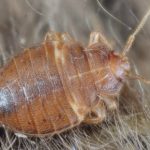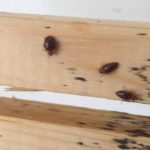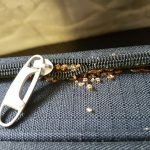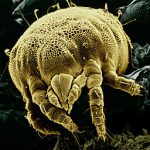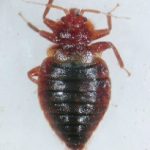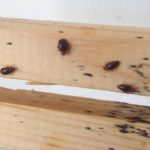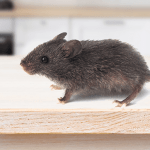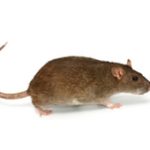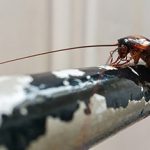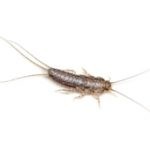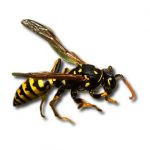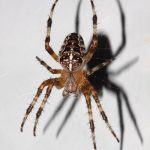Bed Bug vs Flea Bites on Humans – What Are the Differences
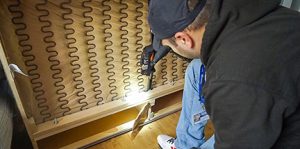 Bug bites can cause a variety of serious health problems. For example, they may lead to blisters, infections caused by scratching the itchy skin or may even transmit a disease. And things are even worse for people susceptible to allergies. That’s why it’s important to know the difference between bed bug and flea bites, as well as how to treat them on time.
Bug bites can cause a variety of serious health problems. For example, they may lead to blisters, infections caused by scratching the itchy skin or may even transmit a disease. And things are even worse for people susceptible to allergies. That’s why it’s important to know the difference between bed bug and flea bites, as well as how to treat them on time.
If something is continuously biting you or other members of your family, it’s likely that you have an infestation on your hands. Below, you can learn more about how to identify the bites and the bugs behind them. Just remember that the symptoms we describe in this guide may differ from yours, depending on how sensitive your skin is and on whether you’re allergic to the bugs.
Identifying Signs of Flea Bites and Bed Bug Bites
What a bed bug bite looks like
- Bed bugs usually bite the upper parts of your body (neck, chest, back, arms, your face) and rarely your feet;
- The bites are small, red spots that have a darker red dot in the middle;
- They appear a bit swollen, like a bump;
- They are often in close proximity to one another and may occasionally form a line.
- Scratching the bites may turn them into blisters.
What a flea bite looks like
- Flea bites are usually located on the bottom part of your body, most often on your legs and ankles since they are the easiest for fleas to reach;
- The bites are tiny, small dots that tend to itch a lot;
- Clusters (not patterns) of red dots can be found on the lower part of your legs and ankles in case you have been bitten multiple times.
Check also: Biting and Stinging Insects in the UK
Reactions To Flea Bites & Bed Bug Bites
Flea bites can cause
- Headaches;
- Fever;
- Shortness of breath;
- Diarrhea;
- Rashes;
- Anxiety.
Bed bug bites can cause
- Allergies, including hypersensitivity, anaphylactic shock (extremely rare);
- Infections if you scratch the bites too much;
- Insomnia occurs when you can feel the bed bugs biting you and can’t sleep. Struggling with insomnia for a long period can lead to several other dangerous complications, such as:
- Irritability and anxiety due to the lack of sleep;
- Depression and stress, which can weaken the immune system.
How Long Do Bed Bug And Flea Bites Last?
In most instances, it takes a few days up to week for the bed bug bites to become visible.
Normally, the bite marks disappear in about two weeks. However, scratching them during that time can contaminate or severely irritate your skin. That will prolong the healing period by a few extra weeks. If you are allergic to bed bug bites, you should seek a doctor immediately!
Flea bites can last up to a couple of weeks as well, provided that you allow them to heal on their own. Scratching can only make the bites worse, so try to suppress your desire to scratch them. if you are allergic or sensitive towards fleas, it can take more time for the bitten areas of your body to fully heal and some medical treatment might be required. A certified flea exterminator can treat your home for fleas.
How to Treat Bed Bug and Flea Bites
What to do when you are bitten by fleas
Do not rule out the possibility of having fleas in your home if you don’t own any pets. Some wildlife species that pass near your home or garden could also carry the pest. Fleas can jump from or fall off the animal and enter your home seeking hosts.
The most common flea species that attack both animals and humans are the Cat fleas or Dog fleas. These blood-sucking bugs are widespread in the UK and can quickly become a great nuisance as their numbers grow.
Here is what you can do if a flea bites you:
- Wash the bitten area with soap;
- Apply an ice pack or an antiseptic creme;
- If the bite marks discharge any pus, seek medical attention immediately.
Keep in mind that treating your bites does not solve the problem entirely. Contact your doctor as soon as possible, but ensure that your bite treatment goes hand in hand with a pest treatment.
What to do when you are bitten by bed bugs
Bed bug bites may not itch as much as flea bites, but if you do feel an itch, use ice. Ice helps reduce the swelling and stops the bites from becoming blisters.
If you have any suspicions or worries regarding the bites, contact your doctor for treatment.
However, inspecting your home and bed area thoroughly and finding what bugs have infested it is the only sure way to know what has bitten you. Below are some of the signs you should look out for near your bed.
It’s best to book a professional bed bug treatment if you’re concerned about a bed bug infestation in your home.
Serious health issues are very rare in both instances. However, you may start feeling sick or experience physical pain if you are prone to the allergies caused by both insects.
Fleas are known to carry diseases, so you should be aware of their bite symptoms as well. The latter can also be triggered if you happen to be allergic to the insects or their saliva.
Differences Between Fleas and Bed Bugs
Bed bugs and fleas can look very similar, but there are a few key differences that set both apart. Let’s examine what these are below.
Both bites can cause allergic reactions, especially in children or people sensitive to allergies. When bugs bite you, they release saliva into your bloodstream. However, there are no records of bed bugs ever transmitting a disease to a human being. Fleas, however, are similar to ticks in that they can carry and transmit diseases from one host to another. If you conclude that you were bitten by fleas, contact your doctor immediately!
Comparison between fleas and bed bugs
Bed bugs do not fly or jump, but can only crawl. You will hardly ever see the insects while they’re biting you because this always happens while you are asleep. Should you spot a tiny bug crawling next to your bed, make sure to inspect it closely.
Fleas can jump approximately 30cm high. You can occasionally see them jumping on the surface of your furniture or away from your lying pet.
Read more: Bugs that Look Like Bed Bugs
Size and shape
Bed bugs can grow up to 5 mm in length and 3 mm in width; the body is flat and oval; reddish-brown colour.
Fleas can grow up to 4mm in length; have a sideways-flattened body; reddish-brown in colour.
Signs of a bed bug infestation
- Finding small red or brown stains on your sheets indicates that the insects have been feeding the previous night.
- Rusty stains on your sheets or mattress can be a sign of a bed bug infestation. You can also check your skirting board to make sure.
- Bed bugs are oval-shaped, tiny brown bugs that you can spot on the bed or the nearby wall. Usually, they come out only at night, but you can encounter these bugs during the day as well if the infestation is severe.
Check more signs of bed bugs
Signs of a flea infestation
- If your pets are scratching and biting themselves more than usual, that means they’re infested;
- Pets that are irritated by fleas may occasionally tear out their own hair;
- Put on white socks and walk around your house and near your pets. If a flea jumps on you, you will spot it easily once it lands on your white sock.
Read more about the signs of fleas
Preferences and diet
Bed Bugs prefer to feed on humans. Most active at night. Can bite you in more than one place on the same night.
Fleas mainly feed on animal hosts but can bite humans as well.
Where to find them
Bed bugs usually stay close to their food source. This means that they may live in wall cracks next to your bed, in the seams of your mattress, inside the bed frame or the skirting board. Rarely do they hide in clothes, wardrobes, or suitcases?
Fleas live on pets or in areas where your pets like spending time the most (on bedding, a specific room corner, etc). They can also live in upholstery and carpets for a brief period of time.
Why worry about them
Bed bugs are mostly harmless. It does not carry or transmit any diseases. However, it can trigger painful reactions in people who are allergic to bugs.
Fleas can be dangerous. Fleas are likely to transmit diseases while feeding.
What Bit You − Bed Bugs or Fleas?
If fleas have infested your home, expect you, your family, and your pets to be bitten every single day. Flea bite marks usually appear immediately after the bite has occurred.
Bed bugs, on the other hand, will only bite you at night while you are sleeping and can feed on you for as long as ten minutes. After feeding for a couple of nights in a row, they will suddenly stop until its time to feed again.
It is important that you begin an exhaustive house treatment for these pests as soon as you receive your first bites. If you don’t do that, you’ll be stuck dealing with the symptoms over and over since their source will always lurk nearby. You should also consider the possibility of having dust mites.
Find Out What’s Biting You
We distribute educational information according to the experience and professional knowledge of the pest technicians. However, we don’t provide any medical advice.



